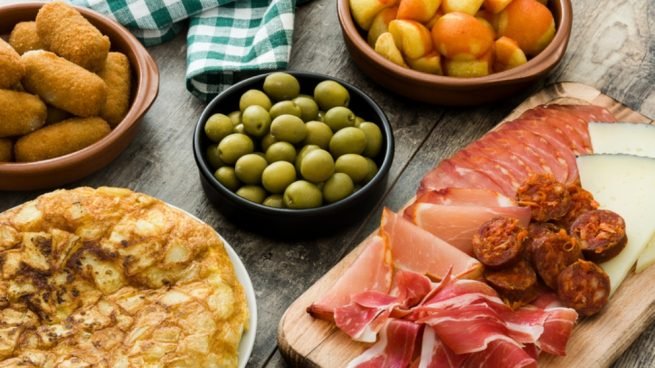
The tapa is one of the definitive symbols of Spanish gastronomy. Exported to much of the world, it is increasingly common to come across a tapas bar in the most unlikely places on the planet: it's quite understandable, everyone likes to eat, drink and a good chat. But despite the considerable international success of the tapa, the specific origin of this gastronomic act is still unknown: why did the famous Spanish tapas emerge?
Most of the versions about the origin of the tapa put its etymology in relation to the act of 'covering' (tapar = cover). In this sense, it is said that since ancient times there would have been a custom associated with taverns, bars and food outlets: putting food - generally ham or cheese - on top of the jug or glass, usually wine. And why on top? Tradition states that the piece of food would prevent insects or dust from entering the wine and that it would retain its flavour longer. It makes sense, doesn't it?
However, there are those who point out that this traditional explanation has a weak point: if the lid covers the wine, what covers the lid?. The insects or the dust would end up on the piece of food something and that would not be too pleasant either.
On the other hand, the term 'tapa' has coexisted for many years with another that refers to a very similar concept: the pincho or pintxo, more common in northern Spain. It would be a "lid" that includes a toothpick to facilitate its handling. Unlike the traditional tapa that is accompanied free with the drink, the northern pincho is not free and it is the diner himself or herself who takes it directly from the bar, where the trays of pinchos are usually displayed.
So when does the concept of a 'cover' appear in literature? In the book 'El Lazarillo de Tormes' drinks were already covered with food, but the name 'tapa' does not appear. Likewise, in Don Quixote or in some of Quevedo's works the same concept is also present, but with different names: 'Callings' in the case of Cervantes' writings, the idea being of 'calling' one's thirst, and 'Warnings' in the case of Quevedo: an aperitif that prepared you for the main dish that was coming later.
The truth is that the Royal Academy of Language has no evidence that the word 'tapa' appeared in any cookbook before the 1930s, pointing out that it is an 'Andalusianism', a term that would emerge in southern Spain and then it would be exported to the rest of the country... and then to the whole world.
Despite the fact that the word 'cover' is less than a century old in its current sense, the legends about its origin go back much further in time. Here are some of the possible 'mythical' origins of the Spanish tapa...
1. Back in the 13th century, Alfonso X El Sabio saw fit to put into practice a decree to ensure the health of the population: he ordered the inns of his kingdom to serve some food accompanying the wine they served in order to 'soften' the effect of the alcohol on the patrons. Apparently, the king had previously been prescribed a glass of wine to treat an ailment and not seeing it clearly, he decided to add a little food ... making him feel much better.
2. Another version of the term could have arisen in a tavern in San Fernando where the Catholic Monarchs stopped off: there were so many flies in that 'shack' that the king asked for a slice of something to cover the wine: “here you have your 'cover', your majesty " he is claimed to have said.
3. In the second half of the 16th century, the French term étape was borrowed and used as 'tapa' in the realm of war: it would refer to the soldiers' rations during a march that lasted more than one day. In this sense, the 'tapa' would have been the place where this snack was made and 'tapear' would be the action of eating it while resting briefly.
4. Just as the modern hamburger could have arisen, the tapa could also have been born from the need to transport the food and drink more comfortably: they say that the gentlemen of the private clubs of Seville went out to order drinks from the nearby 'tablaos' placing a slice of sausage on top so they could free up a hand...practicality.
5. During the 20th century and returning to Andalusia where it is more than likely that the origin of this divine aperitif originated, Alfonso XIII was travelling through Cádiz when he decided to stop at the Ventorrillo del Chato inn by the beach (still located in the same place). He ordered a Jerez wine and the innkeeper quickly came with the glass and a piece of ham that he had placed on top of it to prevent sand on the beach from being blown into the wine by the wind.
Be what it may, the truth is that tapas have become an emblem of Spanish gastronomy, one of Spain's most beloved customs, does it really matter how it originated? I don't think so.